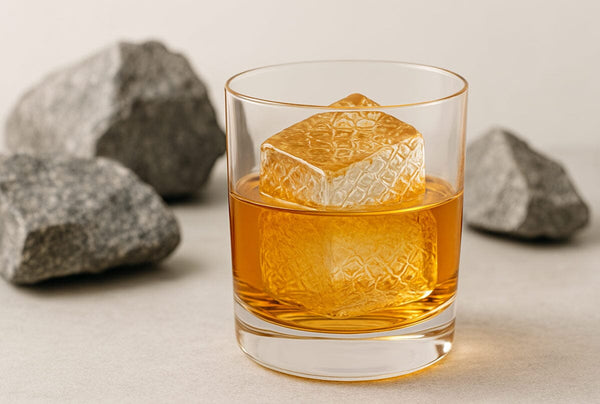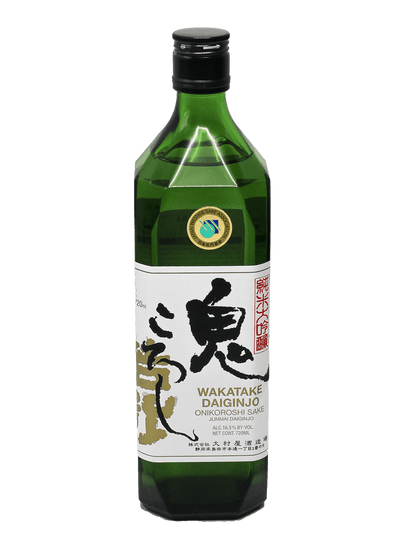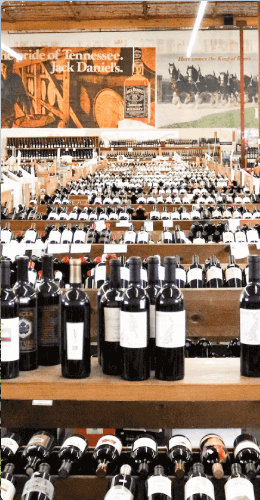“On the Rocks.” What Does It Mean?

“On the rocks” means on ice: a cocktail with ice cubes in it. Hence: “Whiskey on the rocks, please.” The proverbial “rocks” are the ice cubes.
But not so fast.
The New Wave of “On the Rocks” Cocktails in 2025

As VinePair has reported, the simple ice cube is no longer so simple. Clear logo-stamped ice cubes, once the height of cocktail chic, have now given way to fully patterned ice for on-the-rocks cocktails, with intricate textures adorning all six sides of each cube. The shift reflects how fast trends evolve in the cocktail world, especially among social media-driven bartenders and ice influencers.
From Cubes to Canvases: Ice as the New Visual Centerpiece
Decorative ice has become a visual and stylistic centerpiece. “On the rocks” has moved beyond even mere cube clarity to embrace embossed designs like honeycomb, spikes, scales, and zigzags.
A Short History of Ice in On the Rocks Drinks
The ice industry is only about a century old, while cocktail culture has two centuries under its belt. The forms ice takes have evolved along with mixology trends.
New Ice Formats for Modern Cocktails
From the chunky cubes that once filled balloon glasses with our gin and tonics, we’ve moved on to perfectly clear spheres designed for visual appeal.

Standard ice cubes, weighing between 30 g and 70 g in various sizes, are still going strong, as are pearl ice and crushed ice. But now they share space with a range of premium, crystal-clear options. There are 5 x 5 cm cubes, 12 x 5 cm sticks or ingots, and the newest arrival, the sphere: 45 g and 4.5 cm in diameter, or the 6 cm version, fully transparent and visually stunning.
What Does Ice Actually Do in an On the Rocks Drink?
“On the rocks” meaning a few opaque ice cubes, is no longer up to snuff. Mixologists say that purely crystalline, large-format ice provides much more versatility when serving, creating, and decorating cocktails, and it’s what people prefer today.
The Craft of Ice: Clarity, Dilution, and Design
Bartenders are now far more attentive to ice dilution and the kind of water used to make those “rocks.” Ice quality has improved so much that entire companies now specialize in the craft of ice.
At the same time, one Spanish mixology specialist points to a growing misstep: “We’re at a stage where creating a drink that looks impressive on Instagram often takes precedence over a thoughtful decision by the bartender about which kind of ice a drink actually needs. When I see a highball cocktail filled with a column of ice that takes up the entire glass, it might look beautiful and striking—but I wonder if the drink suffers because of that ice. There’s a kind of ice fetishism going on, and we’re forgetting the practical side.”
Choosing the Best Ice for Every On the Rocks Cocktail
Many bartenders say ice plays the same role for them as fire does for chefs. Ice cools the cocktail, of course, but it also provides necessary dilution in many drinks.
Crushed Ice for Tropical Drinks
Take the Mai Tai, for example—it’s heavy in alcohol and sugar: it contains plenty of orgeat syrup, sometimes also simple syrup and a liqueur, depending on the recipe. It’s a dense cocktail that can’t be served without ice. Crushed ice works best because it provides more chill and more dilution while holding the cocktail’s texture.
Large Ice Cube for Dilution
By contrast, serving a drink over one large block of ice leads to slower dilution and less cocktail evolution—best suited for drinks that are balanced and complete when poured.
Multiple Ice Cubes to Evolve the Cocktail
“If I want the drink to evolve, like a Negroni, which opens up as you sip, it makes more sense to serve it over multiple ice cubes. With a greater surface area, dilution happens a bit faster than with a single large cube, which can help shift the drink’s balance as you go—and that’s often a desired effect.”
In other words, a cocktail won’t taste the same from the first sip to the last. With the Old-Fashioned, for example, the first sip was supposed to be strong, then mellow as time and those ice “rocks” worked their magic.
Specialty Rocks Producers
As VinePair reported, specialty companies such as The Edinburgh Ice Company and Tampa Ice Plant began producing patterned cubes years ago, using custom metal plates to imprint textures. Inspired home bartenders and social media creators followed suit, crafting their own versions with meat tenderizers or investing in tools like the $200 Ice Designer, launched by Tony Gonzales, which has gone viral and now ships globally.
DIY On the Rocks: Making Bar-Quality Cocktail Ice at Home

This new wave of ornamental ice owes much of its momentum to the rise of pandemic-era home bartending and content creation. Clear ice, once a hard sell, became standard, and now textured cubes offer the next level of visual distinction, especially on camera.
For instance, Gonzales’ Ice Designer, praised for its rapid embossing and photogenic results, has helped pattern-stamped ice explode across Instagram and TikTok, garnering millions of views. Though only a few commercial producers like Tampa Ice Plant offer patterned ice in bulk, demand has sparked a cottage industry in plates for home or bar use.
As the trend spreads to bars from Los Angeles to Scottsdale and beyond, and tools hit markets in countries as far-flung as Turkey and Chile, it's clear the era of minimalist ice has ended. The cocktail cube has become a canvas.
Related Reads:


















Leave a comment